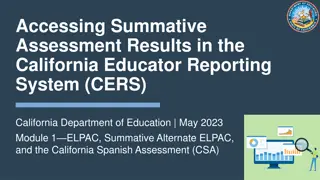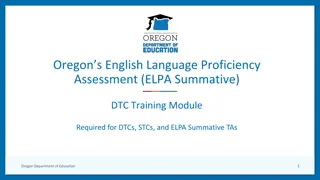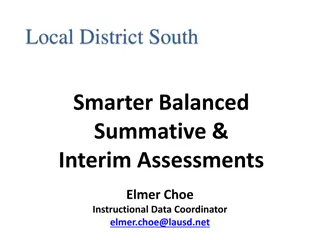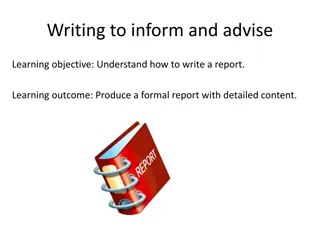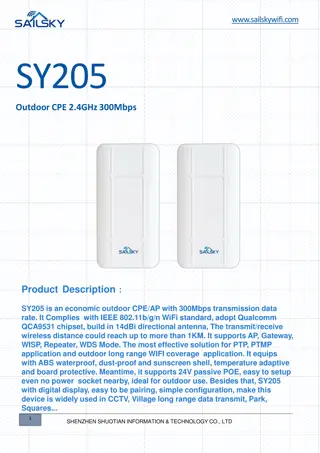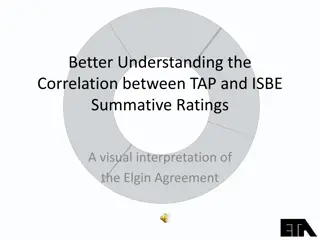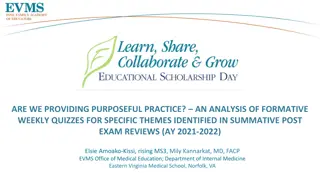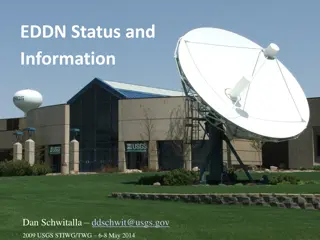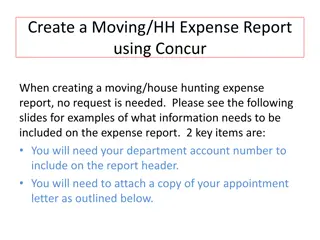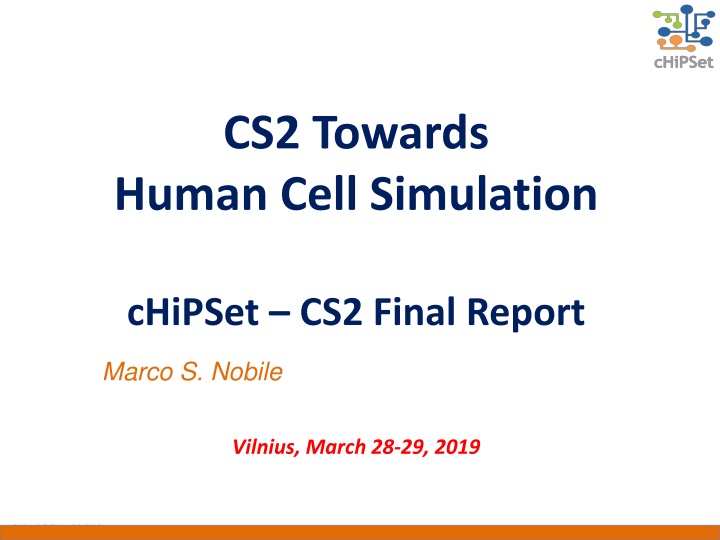
Advancing Human Cell Simulation: Modeling and Parameter Estimation
Explore the cutting-edge project on human cell simulation, combining multiple modeling approaches and offloading computations on GPUs. Learn about the challenges in missing parameter estimation and the use of evolutionary algorithms for optimization.
Download Presentation

Please find below an Image/Link to download the presentation.
The content on the website is provided AS IS for your information and personal use only. It may not be sold, licensed, or shared on other websites without obtaining consent from the author. If you encounter any issues during the download, it is possible that the publisher has removed the file from their server.
You are allowed to download the files provided on this website for personal or commercial use, subject to the condition that they are used lawfully. All files are the property of their respective owners.
The content on the website is provided AS IS for your information and personal use only. It may not be sold, licensed, or shared on other websites without obtaining consent from the author.
E N D
Presentation Transcript
CS2 Towards Human Cell Simulation cHiPSet CS2 Final Report Marco S. Nobile Vilnius, March 28-29, 2019
Goal of the project Whole (Human) Cell Modeling and Simulation Multiple scales = Multiple methods for modelling and simulation must be combined Missing parameters (e.g., kinetic parameters) Intrinsic stochasticity (e.g., signaling, gene regulation) Synchronization and communication between the simulation methods is necessary Massive amount of reactions and chemical species massive calculations Attempted by Karr et al.using model of bacterium M. genitalium (see scheme) 521 genes: enough for all basic processes Never attempted on human cells Figure taken from: Karr et al., A whole-cell computational model predicts phenotype from genotype, Cell 2012
Our approach Combine phenomenological modelling/simulation techniques (e.g., Boolean networks, Fuzzy Rule-Based Models) with more detailed mechanistic approaches (e.g., differential equations, Markov chains) Intensive computations (e.g., ODEs) will be offloaded on multiple GPUs Fuzzy RB model defined by hand or (possibly?) automatically inferred from data The various algorithms will run in a distributed fashion using MPI (master node collects partial results) Stochastic simulation is one bottleneck of the method: we need a clever strategy to improve performances We need to estimate a huge amount of parameters We can automate the collection of biological data using Information Retrieval
Progress of the CS Task A4 Task A2 Task A1 Task A3 Metabolic modeling reduction and simulation Integration of deterministic GPU-powered simulation Accelerated stochastic biochemical simulation Automatic FRBM model inference Task Z1 Task B1 Task C1 Task D1 Application to programmed cell death Integration of stochastic simulator and FRBM Estimation of missing parameters Integration of all modeling approaches
Estimation of missing parameters Parameter Estimation can be stated as a minimization problem (i.e., minimize the difference between simulation and experimental data) We are currently testing DISH (DIstance Based Parameter Adaptation for Succes-History based Differential Evolution), a variant of Differential Evolution Among the state-of-the-art of evolutionary algorithms for global optimization Preliminary tests: six biochemical models with 50 reactions (=missing parameters) In silico generated target dynamic target data Preliminary results are not satisfying we will repeat the tests on more complex systems (>50 parameters)
Hybridization of mechanistic and fuzzy rule-base models Two regimes that communicate by means of a shared interface In our tests, a FRBM was combined with a reaction-based model simulated using Gillespie s Stochastic Simulation Algorithm (SSA) Both modeling approaches require a massive domain expertise In the preliminary tests the method was able to correctly reproduce complex phenomena using only a smaller fraction of computational effort Spolaor et al., IEEE TFS (under revision) 1200 1000 800 Running time [s] 600 400 200 0 Pure SSA Hybrid model
Accelerated stochastic biochemical simulation We are planning to model with Markovian Agents the concurrent reactions firing in the biochemical systema Would be helpful to strongly improve the performances of the stochastic simulation Represents a simplification with respect to pure SSA See Bobbio et al., Markovian Agent Models: A Dynamic Population of Interdendent Markovian Agents , 2016 Work in progress (no results)
Book chapter A book chapter in forthcoming vol. 11400 of Lecture Notes in Computer Science was written by all group members Topics: challenges of whole cell simulation, HPC and Big Data in life sciences, hybrid and multi-formalism modeling approaches, model reduction, kinetic parameters estimation, inference of fuzzy models
Next steps We plan to exploit automatic model reduction to improve performances (and possibly reduce the number of missing parameters to be estimated) Provide additional data for automatic inference of FRBM Test estimation algorithms (DISH and FST-PSO in particular) on higher dimensional models Test Chaos-driven PSO and multi-objective (e.g., NSGA-II) Apply Markovian Agents to multi-scale tissue simulation
CS members Daniela Besozzi Paolo Cazzaniga Luis Correia Mauro Iacono Joanna Kolodziej Giancarlo Mauri Ivan Merelli Marco S. Nobile Zuzana Kom nkov Oplatkov Sabri Pllana Roman Senkerik Simone Spolaor Natalja Stojanovic Esko Turunen Ale Zamuda



